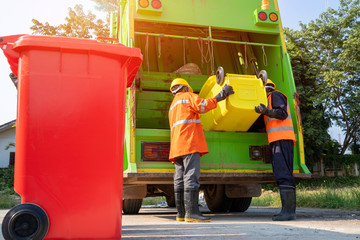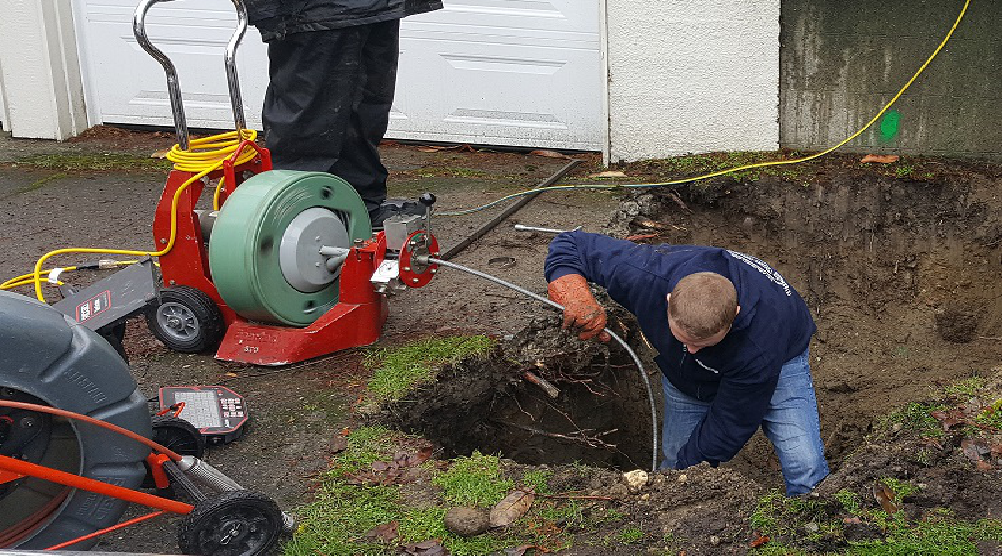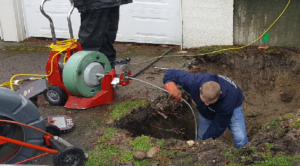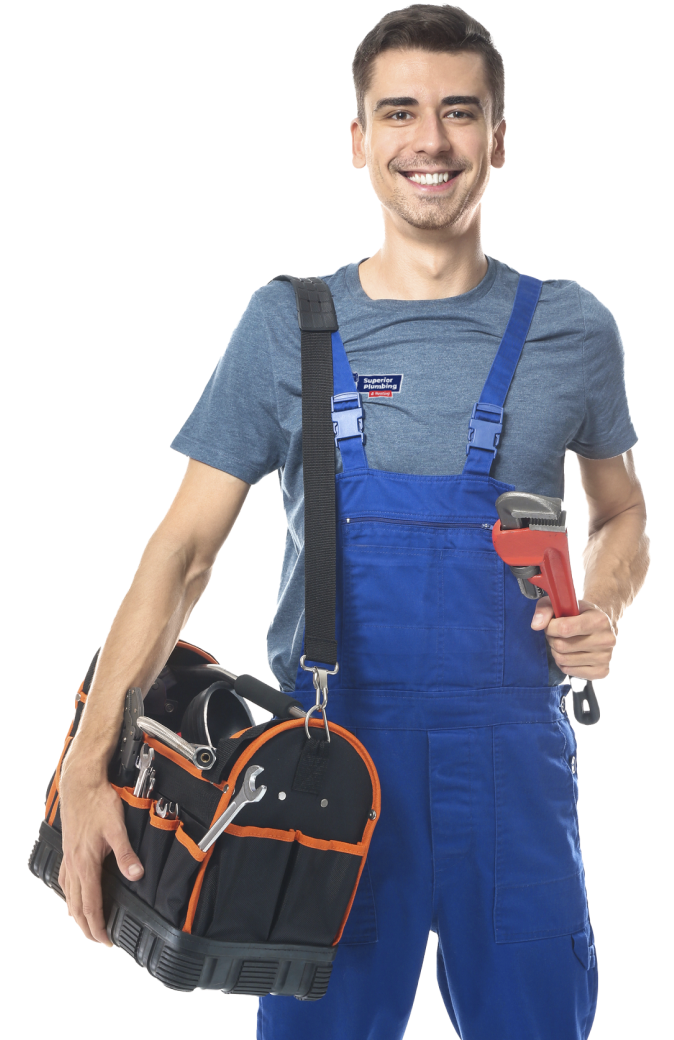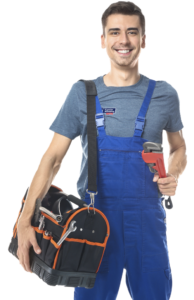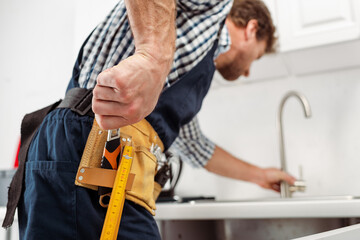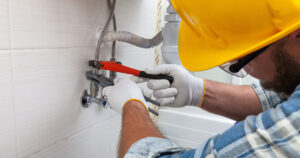Joe’s Plumbing system delivers clean water to the fixtures and drains the waste. Its configuration must comply with the housing codes and ensure occupants’ safety from contaminated water or dangerous sewer gases.
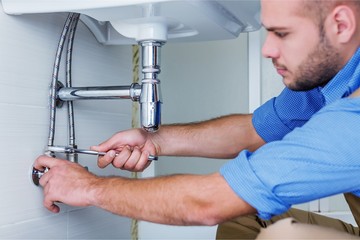
Copper pipes are standard for the non-flexible portion of a house plumbing system. They resist corrosion and can withstand significant pressures.
Water supply pipes run from your city’s main water line to each property, usually under the street. Your house’s water supply line is the one that connects to this main line, and it has a metering device to keep track of how much city water your home uses. It also sends water to all taps in your house, including showers and toilets, if you have them.
It can vary in how fast it flows from your taps, which depends on the pressure of the water coming from the city’s water tower or service reservoir. Pressure also depends on how far your house is from the water source, and how much other water use in your area is taking place at that time.
The water lines in your house are normally made from PVC, which is less costly to install and has a smooth inner lining that resists sediment buildup. The pipes are also smaller than those found in older homes, which improves your water pressure.
There is generally a valve before or after your water meter, which allows you to shut off the supply of water into your home. This is a handy feature to have in case of an emergency, or when you’re doing renovation work and need to turn off the water.
Your water supply lines then send water to your kitchen sink, basins and toilets (if you have them) via a water heater. From there, your home’s plumbing systems either have a direct system that supplies all the cold taps in your home with mains-pressure drinking water, or a hot and cold-water split system.
As water is used in your home, it flows down the drains and into the sewerage system. A drain can become blocked with food scraps, so it’s important to have a good rubbish removal system in your home. You should also regularly clean your drains to avoid smelly sewer gas.
Your household waste is either drained directly to the sewer through a single pipe called a “single-stack” system, or sent to a septic tank or cesspit for storage before being taken away by a waste lorry for treatment. Rainwater runoff is often directed to soakaways rather than dumping it into the sewerage system.
The plumbing trap in your home is designed to prevent sewer gasses, odors, and waste from entering the house. It is a reservoir of water connected to every drain line that enters the sewer and stands between these nasty gasses and your home.
Sewer gas consists of methane, hydrogen sulfide, carbon monoxide, and other gasses that are extremely unpleasant to breath in high concentrations and can be dangerous or even deadly. Traps, in all their many forms and configurations, are an effective means to prevent these gases from entering the house.
The function of the house sewer trap is achieved by a series of connected plumbing fixtures and a vent pipe. As wastewater leaves a sink, toilet, or tub and travels down the drain lines it creates centrifugal force that pushes a small amount of water back up through the fixture and into the p-trap. This water is sufficient to maintain a proper seal that prevents the escape of these obnoxious gases.
This p-trap also keeps lint, hair, and other debris from entering the drain line and creating a potential clog. While a p-trap is not a perfect system, it is an excellent and effective way to protect your home from the negative consequences of a faulty plumbing system.
Most modern drain systems use a trap composed of PVC, ABS, or another plastic material that is not susceptible to corrosion and other forms of degradation. This makes them far more reliable than the old style cast iron p-traps that were once commonplace in older homes.
However, even these newer traps are not without their problems. One of the main issues is that they can lose their water seal over time due to capillary action. Hair, lint and other debris often hangs over the outlet of the p-trap and can clog up the drain with time. This can be prevented by a p-trap primer that automatically recharges the p-trap with fresh water to maintain a proper seal.
A good rule of thumb is to install a Y fitting with a cleanout access flush with the floor to allow easy access to the sewer line between the residence and the street in the event that the p-trap does not maintain a water seal. In the case of a clogged p-trap it is a great idea to call a professional plumber who can hydro jet and snake the drain line to remove any blockages in the trap.
The drainage system of a house includes the network of drain pipes that carry sewage, waste water and rainwater away to the public sewer line. The pipe lines in the drainage system are known as the house drain line and the sullage drainage line. The sullage drain pipe carries excreta (night soil) from toilets and the kitchen waste water that does not contain human waste. It is connected to the house drain line through a master trap chamber in which foul gases from the sullage pipe are trapped, and thus prevented from entering the house.
The main drain line, commonly referred to as the house sewer line, is the large buried pipe that moves all the household wastewater to your municipal sewer line or septic tank. This piping is designed to handle the heavy load of solids and liquids that are discharged from plumbing fixtures. However, clogs can occur when items inappropriate for draining are flushed down the toilet, or when food particles, hair strands and other debris accumulate at a sink j-bend.
When a drain pipe becomes clogged, it usually results in sewage backup and possible flooding of the basement or rooms located below the faulty pipe section. When this happens, it is vital to have the clog professionally cleared by a qualified plumber.
It is also crucial that you regularly check for incorrect drain connections. For example, a drain that collects rainwater and discharges it into the wastewater drain is not good as it could result in water pollution in a local river or beach. It is the responsibility of each homeowner to ensure that they have separate drain connections for rainwater and wastewater.
The drain pipes in a house may be made of different materials, including cast iron and copper. Over the last 30 years, European homeowners have experienced satisfaction with a piping innovation that has not yet made its way polypropylene (PP). It is a durable, water-safe plastic material that resists corrosion and requires no maintenance at all. However, it is generally more expensive than traditional piping options.
